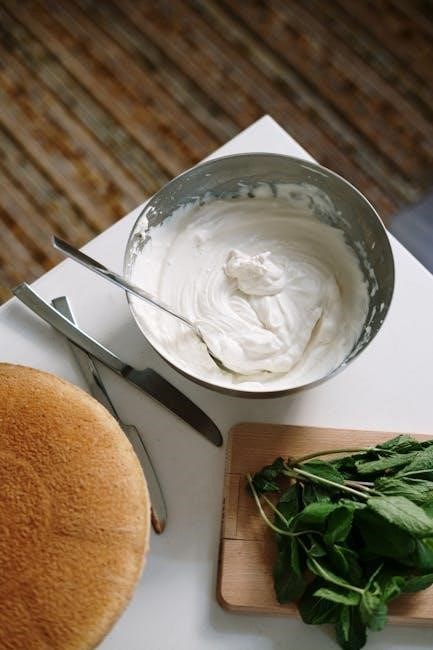
Knife making is a precise craft requiring skill and creativity. Filing is a foundational technique, shaping steel into functional and artistic blades. Precision and patience are essential.

Overview of Knife Making Basics
Knife making is a craft that combines artistry and functionality, involving shaping metal into precise, durable tools. The process begins with selecting high-quality steel, understanding its properties, and designing the blade. Filing is a critical step, allowing for detailed shaping and refining of the edge. Basic techniques include grinding, sharpening, and polishing to achieve the desired finish. Safety and precision are paramount, as even small errors can affect the knife’s performance. Mastery of fundamental skills, such as proper file selection and handling, lays the groundwork for creating functional and visually appealing knives. This guide focuses on the essential filing techniques and tools to help craftsmen refine their skills effectively.
Importance of Filing in Knife Making
Filing is a fundamental step in knife making, enabling precise shaping and refining of the blade. It allows for the creation of a sharp, even edge and ensures proper geometry for functionality. Filing also removes imperfections, smooths surfaces, and enhances the knife’s aesthetic appeal. By controlling the angle and depth of cuts, craftsmen can achieve the desired blade profile. This process is crucial for both functional and artistic knives, as it directly impacts performance and durability. Mastery of filing techniques is essential for producing high-quality knives, making it a cornerstone of the craft.

Choosing the Right Files for Knife Making
Selecting the right files is crucial for knife making. Flat files shape broad areas, while half-round and needle files refine details. Coarse grits remove metal quickly, while finer grits polish edges, ensuring precision and control in crafting the blade.
Types of Files Used in Knife Making
Knife making utilizes various file types, each designed for specific tasks. Flat files are ideal for shaping broad surfaces, while half-round files combine flat and rounded edges for versatility. Needle files, with their slim profiles, are perfect for intricate details and small areas. Diamond files, featuring abrasive-coated surfaces, excel at sharpening and polishing hardened steel. Round files are used for curved edges and holes, ensuring precise control. Each type plays a vital role in achieving the desired blade shape and finish, making them essential tools for any knifemaker.
Understanding File Grits and Their Applications
File grits determine the coarseness of the abrasive, crucial for knife making. Coarse grits, like 60-80, quickly remove metal for shaping. Medium grits, 120-220, refine the edge, reducing scratches. Fine grits, 320-600, polish and sharpen, enhancing blade finish. Extra-fine grits, above 800, achieve a mirror-like surface. Using the right grit sequence ensures efficiency and quality. Proper progression prevents over-sharpening and maintains blade integrity, essential for both functionality and aesthetics in knife making.
Preparing the Blade for Filing
Preparing the blade involves selecting the right steel, understanding its properties, and setting up the workpiece securely for filing. Proper tools ensure accuracy.
Material Selection and Steel Properties
Selecting the right material is crucial for knife making. High-carbon steels like 1084, 1095, and 15N20 are popular for their durability and edge retention. Understanding steel properties such as hardness, toughness, and corrosion resistance ensures the blade meets its intended use. For instance, 1084 steel is prized for its ease of forging and ability to hold a sharp edge. Proper material selection balances hardness and flexibility, preventing brittleness while maintaining sharpness. Steel properties also influence heat treatment and tempering processes, which are vital for achieving the desired blade characteristics. Choosing the wrong material can result in a knife that is too brittle, too soft, or prone to rust, compromising its functionality and longevity. Steel selection is the foundation of a high-quality knife.
Setting Up the Workpiece for Filing
Setting up the workpiece for filing involves several key steps to ensure accuracy and safety. First, the steel blank must be cut to the desired dimensions using a bandsaw or hacksaw. Next, it’s crucial to heat-treat the blade to achieve the necessary hardness and toughness. The workpiece is then securely clamped in a vise to maintain stability during filing. Proper alignment is essential to achieve the desired blade shape. Safety gear, such as gloves and safety glasses, should always be worn. Adequate lighting is important to clearly see the workpiece. Finally, the workpiece should be positioned at a comfortable height to prevent fatigue. Proper setup ensures efficient and precise filing, leading to a well-crafted knife.
Filing Techniques for Knife Making
Filing techniques require precision and control. Use push strokes for consistency, maintaining blade geometry. Light pressure prevents overheating, ensuring a sharp, functional edge with a polished finish.
Basic Filing Techniques
Mastering basic filing techniques is crucial for knife making. Start with coarse files to shape the blade, then progress to finer grits for smoothing. Always maintain consistent pressure and direction, using push strokes to avoid damaging the steel. Keep the file flat and aligned with the blade’s edge to ensure even removal of material. Regularly inspect the edge to monitor progress and adjust strokes as needed. Proper filing ensures a sharp, durable blade, forming the foundation for advanced techniques. Safety and patience are key to achieving professional results. Practice on scrap steel to refine skills before working on final pieces.
Advanced Filing Methods for Complex Designs
Advanced filing involves intricate techniques for complex knife designs. Use jewelers’ files or needle files for curved or angled blades, ensuring precise control. Apply controlled, angled strokes to create decorative patterns or functional serrations. For challenging geometries, alternate between push and pull strokes while maintaining consistent pressure. Specialized files, like diamond-coated or round files, can tackle detailed engravings or hollow grinds. Magnification tools, such as loupes, aid in precision. Safety remains paramount, with gloves and proper lighting essential. Practice on scrap metal to refine skills before applying these methods to final pieces. Mastery of advanced filing elevates knife making to an art form, blending functionality with aesthetics seamlessly.

Heat Treatment and Tempering
Heat treatment and tempering are crucial for knife making, involving hardening steel through quenching and then tempering to achieve desired hardness and flexibility, ensuring durability and performance.
Preparing the Blade for Heat Treatment
Before heat treatment, the blade must be meticulously prepared. This involves ensuring the steel is clean and free from contaminants. Filing and grinding create a uniform surface, which is essential for even heating. Proper shaping and edge preparation are critical to avoid warping during the process. The blade is typically normalized before quenching to relieve stresses. A consistent thickness ensures uniform heat distribution. Proper preparation prevents defects and ensures the heat treatment process yields the desired properties, making the blade durable and functional. Attention to detail is key for achieving optimal results in knife making.

Tempering and Final Shaping
After heat treatment, tempering is crucial to reduce brittleness and enhance flexibility. The blade is heated to a specific temperature, depending on the steel type, to achieve the desired hardness and toughness; Final shaping involves refining the edge and blade geometry. Precision grinding and polishing are applied to remove any imperfections. The knife is then sharpened to a razor-sharp edge using progressively finer abrasives. Proper tempering ensures the blade withstands heavy use without breaking. Final shaping requires patience and skill to achieve a balanced, functional, and aesthetically pleasing knife. This step is where the blade truly comes to life, ready for its intended purpose.

Safety and Maintenance

Safety involves proper handling of sharp tools and files. Regular maintenance ensures longevity of files and knives. Store tools in dry places to prevent rust and dulling.
Safety Precautions While Filing
When filing, always wear protective gloves and eyewear to prevent injuries from flying metal particles. Ensure a stable work surface and proper lighting to maintain control. Keep loose clothing tied back and avoid distractions. Use a vise to secure the blade, minimizing movement. Never file towards your body, as the file can slip and cause accidents. Keep children and pets away from the workspace. Regularly inspect files for wear and replace them when necessary to avoid breakage. Maintain a clean area to prevent tripping hazards. Proper ventilation is also crucial to avoid inhaling metal dust.

Maintaining and Sharpening the Finished Knife
Proper maintenance ensures the knife remains sharp and rust-free. Regularly clean and dry the blade, especially after use, to prevent corrosion. Store the knife in a dry place or use a protective sheath. For sharpening, use a whetstone or sharpening steel, maintaining the original edge angle. Start with coarse grit for repairing nicks and progress to finer grits for polishing. Lightly touch up the blade periodically to maintain sharpness. Avoid using abrasive materials that could damage the finish. Applying a rust inhibitor or oil can further protect the steel. Regular maintenance extends the knife’s lifespan and keeps it in optimal condition for years.
